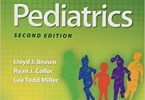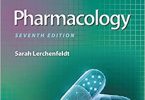
Mnemonics for Paediatrics 1st Edition PDF Free Download
Mnemonics and their making Which nerve roots innervate the diaphragm?
When over 20 doctors who had been out of medical school for several years were recently asked this question they ALL remem- bered that the nerve roots in question were C3,4,5. Not only that, but the reason they stated for being able to remember this fact was that they had all learnt a mnemonic at medical school, ‘3,4,5 keeps the diaphragm alive’. A good point at which to start when trying to illustrate the usefulness of mnemonics.
Though in some quarters mnemonics are waved away dismis- sively as being ‘a cheat’ or in more medical education circles as ‘facilitating a surface approach to learning rather than a deep one’ they have a great heritage going back to ancient times. The etymology of the word is a Greek word which means ‘pertaining to the memory’ while Mnemosyne was the Greek goddess of memory and the mother of the Muses. So there you have it, a learning technique with great classical roots which also happens to be effective. In medicine, mnemonics have long been popular especially in subjects such as anatomy and subjects which seem to be based on memorising fots of information in a short space of time for effec- tive regurgitation at the 2nd MBs. Paediatrics is a broad subject which students encounter at medical school and later on in post-graduate training. It has seemed to me that the technique of mnemonics has been under utilised by paediatricians and wouid be of use to those learning the subject at whatever level, be it at medical school or as an SHO revising for post-graduate exams. A mnemonic is essentially a ‘tool’ or device which helps with the retention of information.


